Beginners Guide to Raising Quail on The Homestead
Raising quail is an excellent way to provide your family with home raised meat and eggs – and it can be done in a fairly small space!
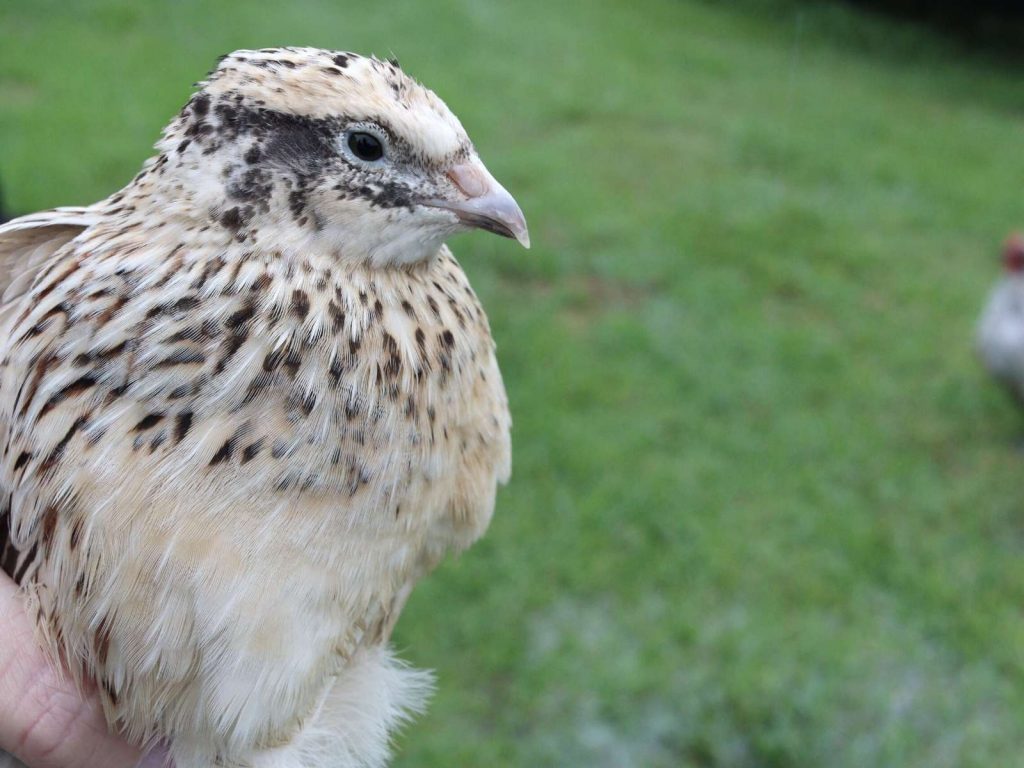
When my husband first mentioned getting Coturnix quail, I’ll admit – I didn’t understand why he thought we needed them.
We already had our dual-purpose chickens providing us with eggs. And we had our heritage meat chickens that stocked the freezer. Why do we need small birds that do the exact same thing?
But I agreed to give them a try and we went ahead and purchased about 30 birds and a cage system.
And here I am now – an advocate for raising quail even if you already have chickens!
Benefits of Raising Quail on your Homestead
Closed and Diversified Food Source
The most obvious answer is that they will provide your family with delicious eggs (pickled quail eggs have become a family favorite) and meat.
You can create a “closed system” with quail. Unlike hybrid meat chickens, such as Cornish Cross or Red Rangers, you can breed your own quail at home to have a continual supply of meat and eggs. This reduces your out-of-pocket costs since you don’t have to buy new chicks every 8 weeks.
Quail also further diversify your food sources since you’ll no longer depend solely on your chickens for eggs and an outside source for meat birds.
Possible Income Opportunities
Quail can become a source of income. Until we started to venture out into the world of quail, I didn’t realize just how high the demand was! From selling fertile hatching eggs to selling day-old quail chicks, it seemed like everyone we talked with was interested in a quail product. You can check out this post here that has a few more ideas on how to make money from your homestead animals – quail included.
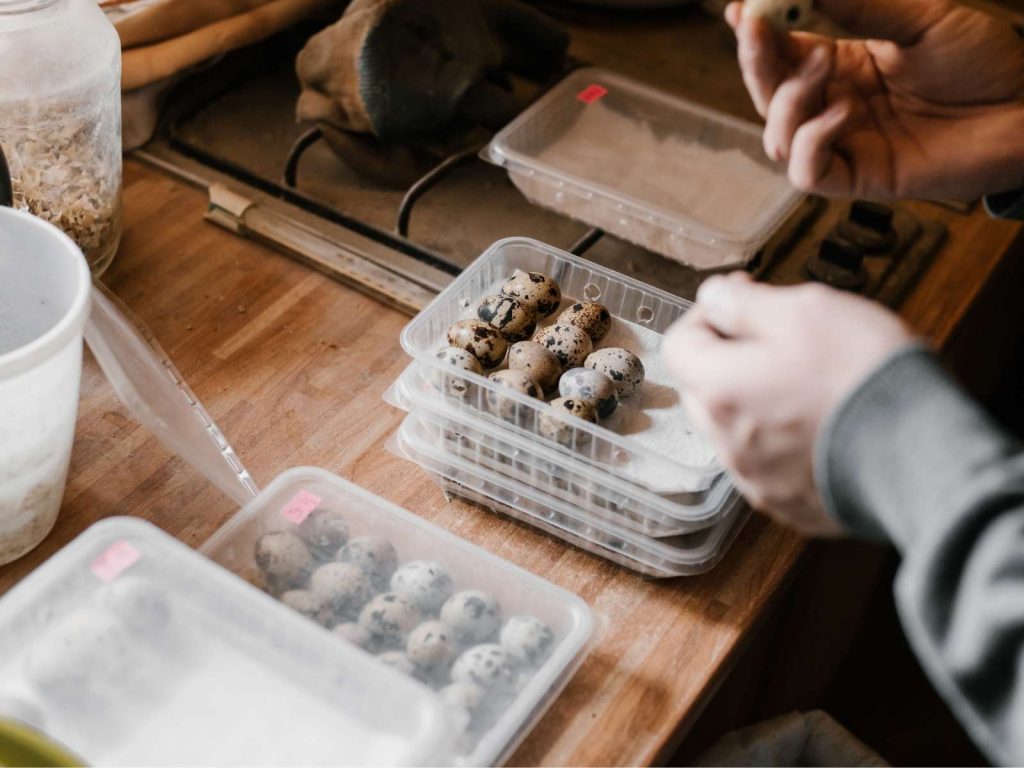
Homestead Contribution
One of the beautiful parts of homesteading is seeing how each and every system can work together. Quail aren’t just here to provide protein – they can also provide us with plenty of manure to add to our compost pile. After that is all broken down, that compost goes to work in our garden beds to provide us with fresh vegetables and fruit.
Small Space Friendly
A lot of individuals who are not able to raise chickens due to local laws reports that they are able to keep quail. This is usually because they can be raised in cage like pets and are fairly quiet.
Here’s a helpful post talking about exactly how loud coturnix quail are.
If you live in an urban or suburban area that restricts raising chickens, check the city ordinances to see if quail are allowed.
The Best Breed for Raising Quail at Home
If you are looking for a quail species that will provide your family with eggs and meat, you need to go with one of the larger varieties. The Coturnix breed provides several varieties of large, fast-growing quail.
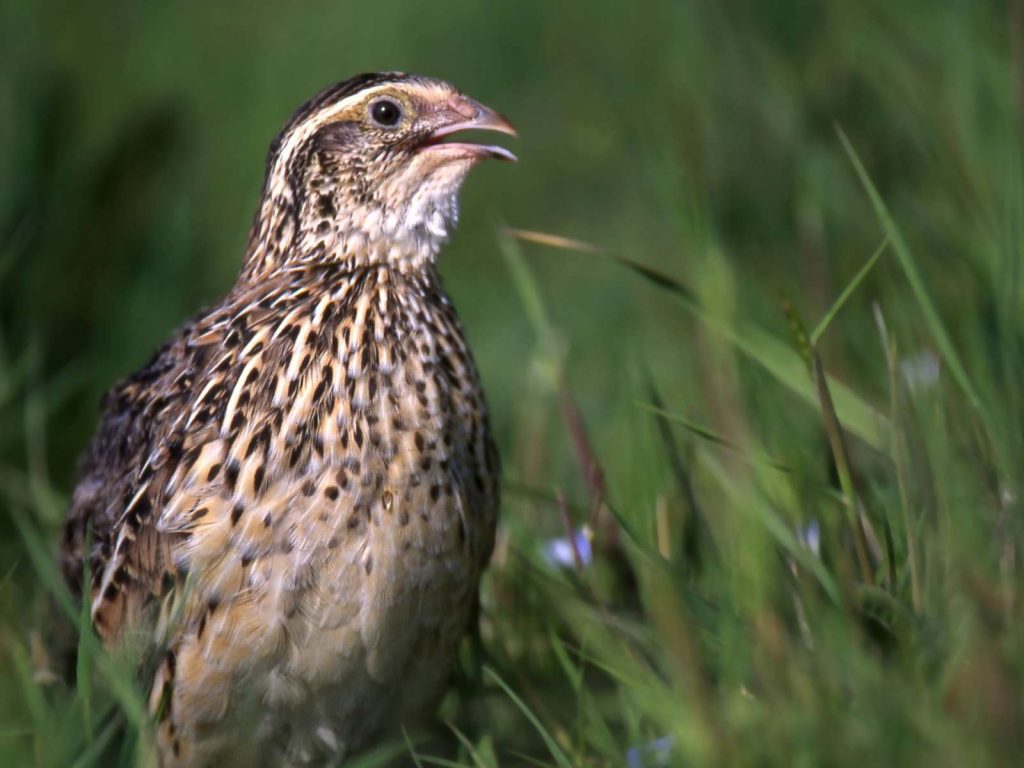
Texas A & M and Jumbo Coturnix Quail (also known as Jumbo Japanese Quail) are going to provide you with decent size eggs and a good amount of quail meat. As an adult quail, the Texas A&M and Jumbo Coturnix will weigh between 12-15 oz live weight.
Other breeds of quail usually weigh between 5-7 oz live weight when full grown. Occasionally, Bobwhite quail will get to be 10-12 oz, but they grow much slower than the Coturnix. It will take the Bobwhite an average of two months longer to reach their full weight, and slightly longer to begin egg laying.
Check out this post comparing the Jumbo Bobwhite to the Coturnix to see a helpful comparison chart that I put together.
Something like a Button Quail isn’t really meant for egg or meat production. Due to their tiny size, they should be regarded more as a pet that you will need to keep indoors year-round.
Since I feel that Coturnix are the most efficient breed for providing fresh eggs and meat on your homestead, all information discussed going forward will be based around this larger, fast-growing, quail breed.
What do you need to raise quail at home?
Quail are fairly simple to care for, but if you are planning to breed and hatch quail for your homestead, you will need more than just the basic housing set up with food and water. Here are some other items you will need in order to have a continuous supple of quail.

- Egg Incubator
- Brooder
- Permanent Housing Setup
- Feeders and Waterers
- Supplies to Process and Store (if raising for meat)
I actually wrote a full post here dedicated to the supplies that we personally use in our quail farming ventures.
How many quail do you need?
This will depend on what you are raising quail for – eggs only or breeding for a meat source or other reason.
Raising Quail for Eggs Only
If you are planning to raise for eggs only, you need to think about how many eggs per day you would like to get. Once at their peak of laying, Coturnix Quail will usually provide you with an egg every day. So, if you want 10-12 eggs each day, you’re going to need at least 12 female quail for that to even be a possibility.
There is no need to keep a rooster if your only desire is to have fresh quail eggs.
Speaking of fresh eggs – here’s your guide on where and how long to store fresh quail eggs!
Raising Quail for Breeding
If you’re wanting to breed your quail – for meat purposes or just to sell chicks – there are a few more factors to consider.
You need to think about how many eggs you want to try to hatch out each time you incubate. Why? Because you only have so long to store fertile eggs before incubating before the eggs are no longer viable. You’re going to need enough hens to provide you with eggs to fill the incubator.
Say you want to incubate 100 eggs. You will need to collect 100 eggs within a 5-7 day period for best fertility rates. Thats about 14-20 eggs per day, so you are going to need at the very minimum at least that many hens.
In addition, you’re going to need a rooster for every 5 hens (more details on this below).
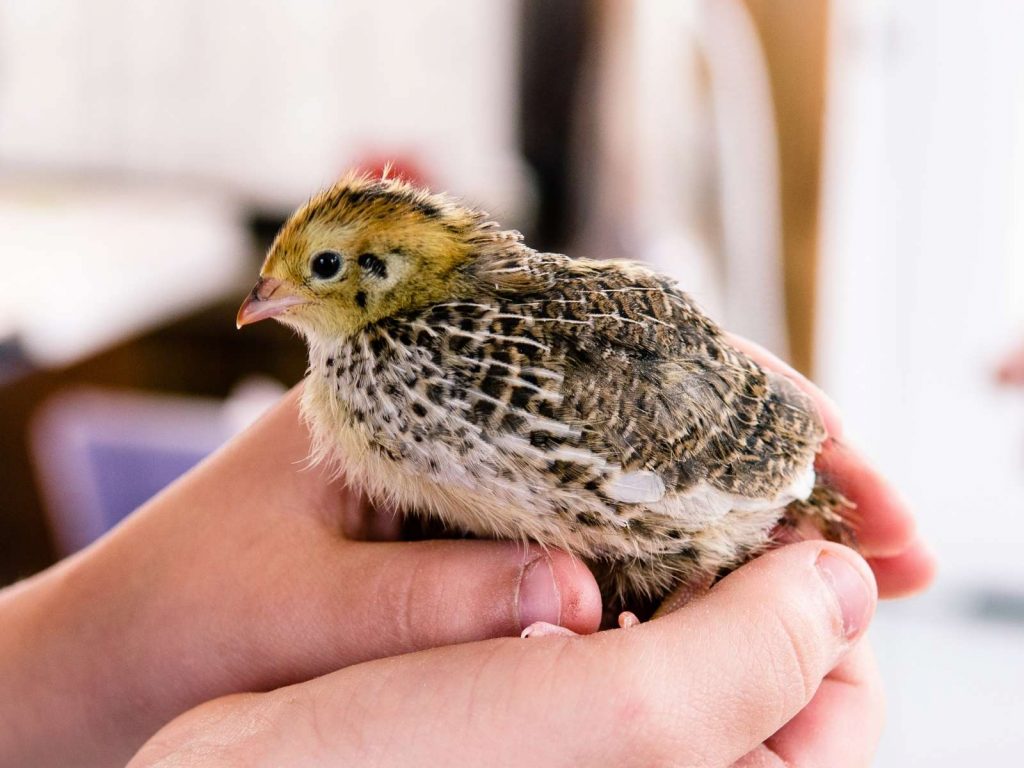
How much space do Coturnix quail need?
The general recommendations for quail are .50 – 1 sq foot of floor space per bird (72 square inches to 144 square inches) The size of your quail will determine where in that range you fall, with smaller birds needing less and larger varieties needing more.
It is also worth noting that your purpose can make a difference. If you are only raising females, you are usually okay at the low end of the size recommendations. However, if you will be breeding your birds, more space is recommended.
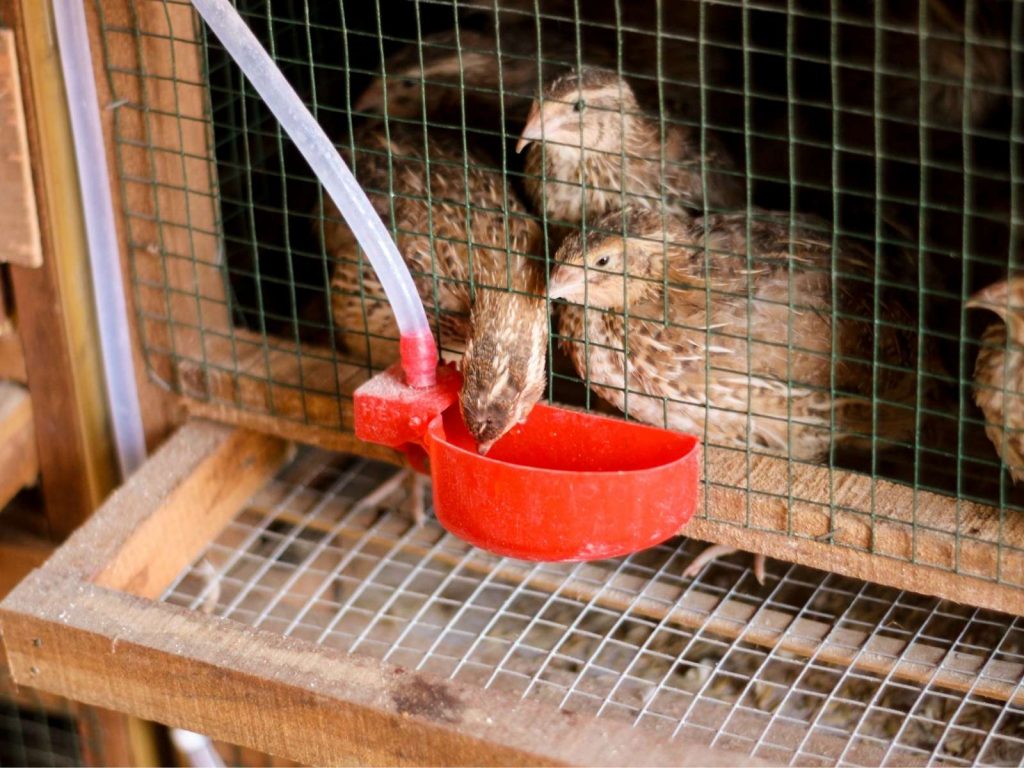
Ensuring adequate space at feeders and waterers is a good idea to avoid fighting. Provide 1 inch of feeder space and 1/3 inch of waterer space for each bird.
Quail are fairly easy to care for, but you need to make sure you are giving them proper space, or you will end up with issues. Too little space, and you will notice fighting in the form of pecking each other – and this can get ugly fast.
Do I need a rooster for my quail?
If you are planning to hatch out new quail yourself, you need a rooster – or several depending on the number of hens you have. Having a rooster so that you can hatch fresh batches of meat birds is the most cost-effective way to go.
If you are only wanting to raise your quail for eggs, you do not need a rooster. Once your hens reach the egg that their egg production slows down or stop, you will need to purchase new quail.
Here on our homestead we have our egg layers and then we have our meat quail. The egg layers are kept in separate cages, and we use those eggs to eat and hatch new birds. We ensure that we keep a proper rooster to hens’ ratio with these birds.
But for our quail that are raised strictly for meat, we don’t keep that ratio. Since we process our birds for meat right at 8 weeks, over breeding is not generally an issue in these birds.
How many quail roosters do I need?
When raising quail for breeding purposes, keeping a good ratio of hens to roosters is also important. Too few hens, and you will notice your hen losing feathers due to excessive breeding. Too many hens, and your fertility rate can be affected. We keep one rooster (male quail) to every to every five hens (female quail) for our breeders.
Some recommendations say a 3:1 ratio, however I have found that this leads to hens being overbred in our birds.
The important thing is that you keep an eye on things. If you notice fighting and pecking in your birds, try providing additional space or adjusting the hens to rooster ratio.
Size and Quantity of Eggs from Backyard Quail
Since quail are little birds, that means their eggs are small. However, you will find that they lay just as regularly as chickens.
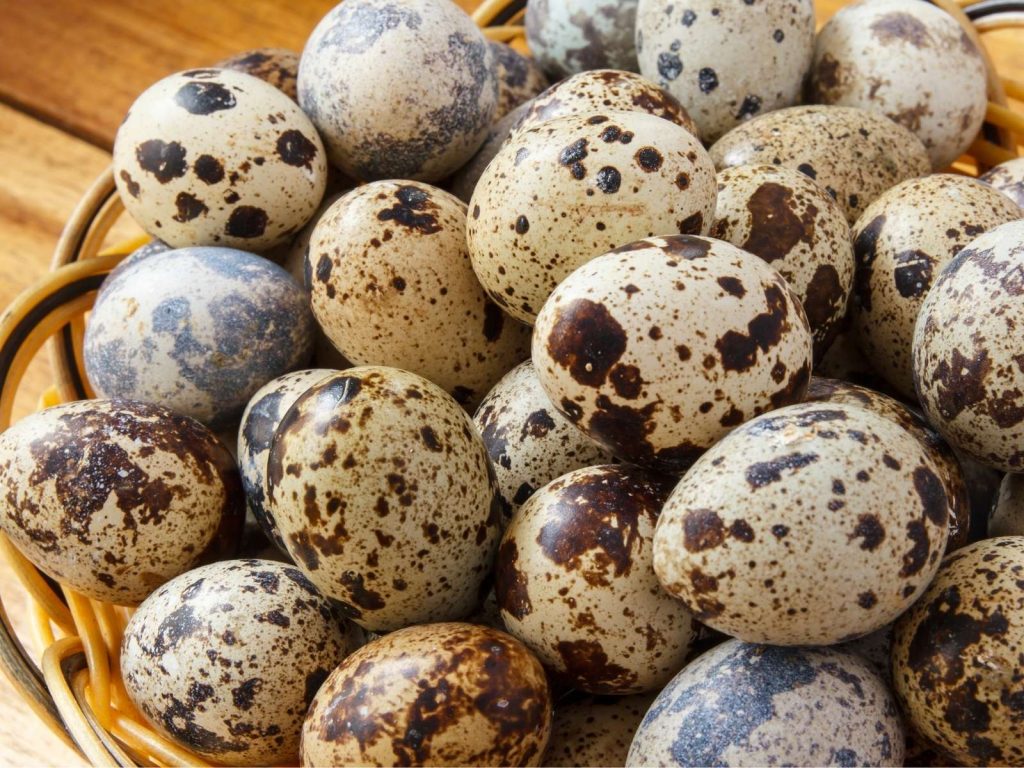
How many eggs does a quail lay?
Jumbo Coturnix quail hens will provide you with about 1 egg each per day or every other day. It takes about 3 of their eggs to equal the size of 1 medium chicken egg.
(Learn about cooking and peeling these tiny eggs here!)
Quail, just like chickens, need a certain number of hours of light in order to lay. You will notice in seasons that daylight hours drop, egg production will reduce.
You can provide a supplemental light source in order to provide the quail with enough light to continue laying year-round, or if you don’t have an area at home that receives enough sunlight. This should be done responsibly, and the lights should never be left on continuously. Quail need “nighttime” hours to avoid stress.
Taste of Quail Eggs
You’ll notice upon eating quail eggs, that there isn’t quite as much “white” in the egg. The yolk-to-egg white ratio is much higher in quail eggs than chicken eggs. Those delicious yolks are packed with nutrients like iron, selenium, and B vitamins – and it provides a nice rich flavor to the egg.
This lack of egg whites isn’t a problem in our house, but I have noticed that quail eggs don’t scramble quite as well due to this.
Housing Options for Quail
There are several housing options available for quail, from prefabricated cages to more natural aviaries. Here’s the pros and cons of each setup.
Quail Cage System
Cage systems are popular in urban areas where an individual may not have space for other housing options as well as in breeding set ups. The small cages have wire floor which allows for the quail droppings to fall into collection pans. The floors are usually at a slight incline, which allows for easy collection of eggs. The eggs simply roll to the front of the cage and stay nice and clean.

The cages are usually no more than 12 inches tall (any taller any the quail can actually hurt themselves trying to fly). You will find stacking cage systems or long cages. Cage systems are helpful in breeding since you can easily keep a good rooster to hen ratio.
If going with a cage system, be sure that you don’t overcrowd them. You will also want to make sure there is enough space inside for a little “house” – basically a box that the quail can get inside to feel safe.
Quail Tractors
A quail tractor is a great option if you have a little bit of land to move it around on. Unlike the cage system, the quail have access to natural material, such as grass and bugs. This is also one of the easiest housing set ups to keep clean. Some people will say birds shouldn’t be kept on grass…but I disagree. The more natural, the better on our homestead 🙂
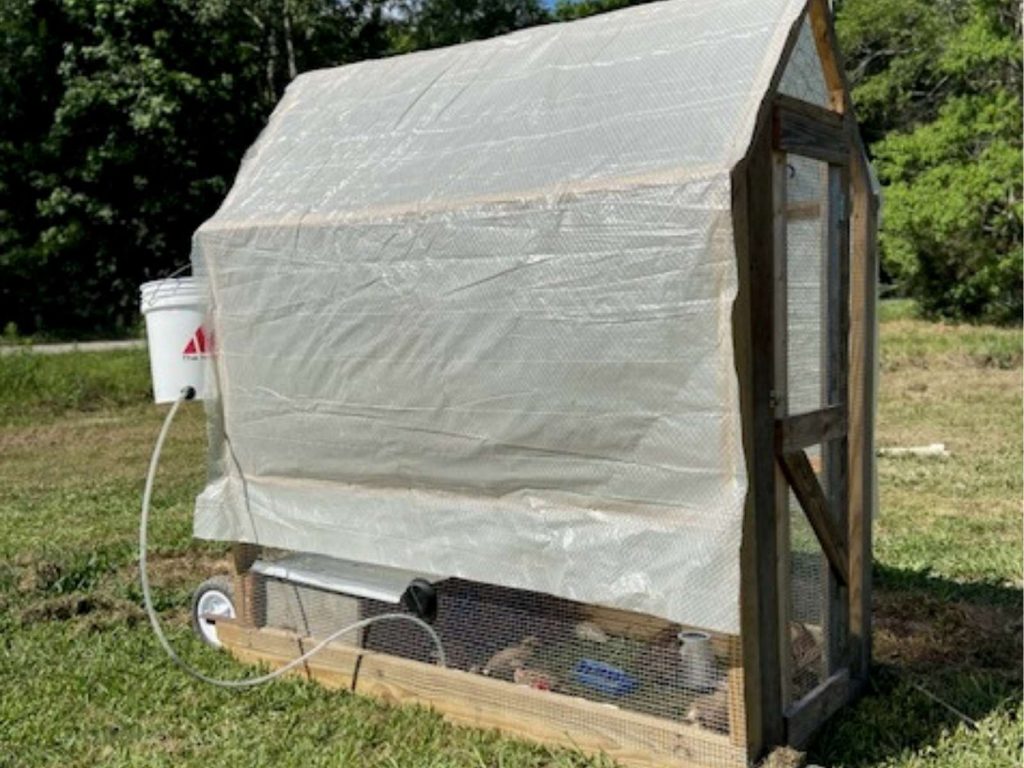
Each day, you will pull the tractor to a new set of grass verses cleaning out bedding or dropping pans. The quail will then have nice clean grass to live on, and the quail manure left in the previous patch will be an excellent fertilizer.
The only things not as convenient in the tractor set up is egg collection. You may end up with dirtier or cracked eggs in this setup since there is not a way for the eggs to roll out. Occasionally a hen will lay her eggs in the nesting box we provide, but I’ve not found them to be as consistent as chickens with this.
It is worth noting that these tractors need to be predator proof. You are going to want to use something like small hardware cloth to enclose the area. You need to be familiar with potential predators in your area to ensure you are properly enclosing the area. Some can get away with less, but others will need to protect against very determined predators and will need extra protection.
Quail Aviary
You cannot free range quail, but an aviary type system allows for the most natural habitat. In an aviary, your little birds will have access to a habitat that mimics what they would have in nature – grass, dirt, tree limbs.
An aviary is another wonderful way to raise your quail. But you will need to make sure you have adequate space to set one up in your backyard. As mentioned with the tractor, the egg collection may not be as clean in this setup. But I think it may be worth it to give the quail this natural environment 🙂
You also need to ensure that the height is at least 6 feet. Since quail are wild game birds, they can and do fly. Their flight takeoff is quite powerful, so they can actually break their little necks if they encounter an obstacle too low.
Feeding Quail
When it comes to feeding your quail, you will need to provide them with a high protein diet. This is usually done in the form of a game bird feed. For proper growth and egg laying, chicken feed should not be used for quail.
Hatch to 4 Weeks: Feed you quail a 28% game bird or turkey starter for the first 4 weeks.
After 4 Weeks: Transition to a 19-21% grower/maintenance feed in crumble form.
Baby quail need their feed to be ground very finely. I do this by throwing the game bird crumbles in a blender and turning them in to a powder. Usually after the first week I transition away from this and all the birds to start pecking through the crumbles.
Brooding Quail
If you are going to hatch your own quail out at home, you will need a brooder.
This is to keep the chicks in until they have feathered out enough to move to their permanent housing setup.
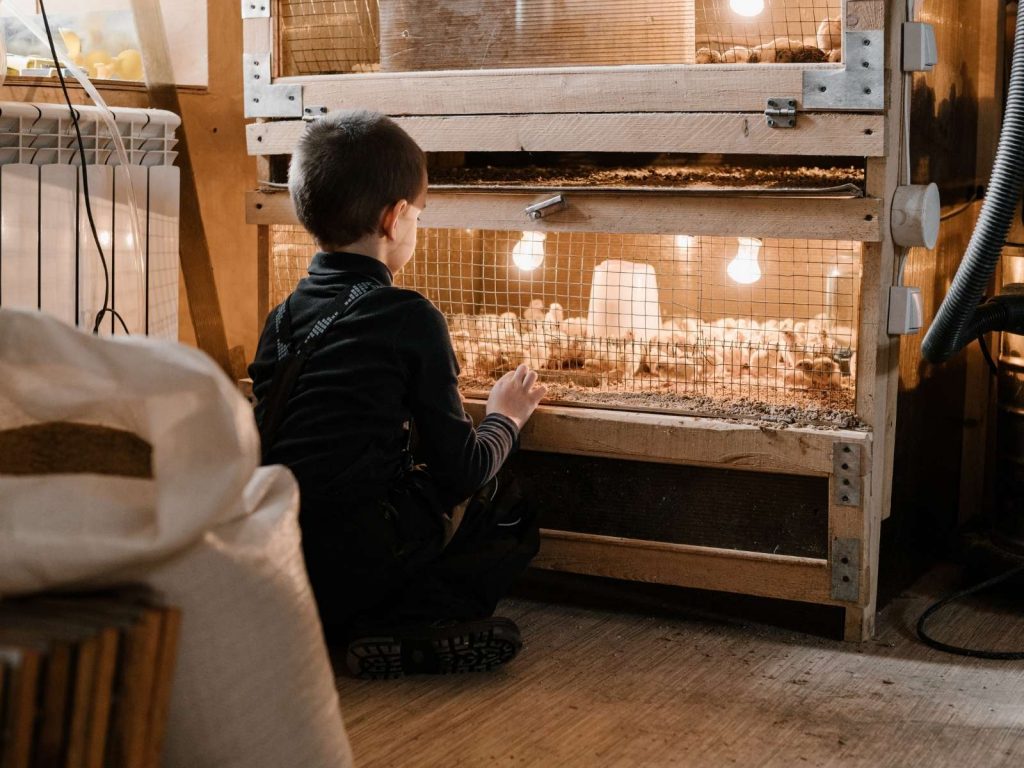
Check out this post of the DIY brooder we use for our day-old chicks.
Heat Requirements for Quail
Upon hatching, your quail will need to be kept in a brooder with a radiant heat of 100 degrees directly under the lamp. Outside of the lamp should be kept at 95 degrees. This temperature will need to be maintained for the first week.
- Days 0-7 :100-95°
- Week 1-2: 95-89°
- Week 2-3: 88-81°
- Week 3-4: 81-77°
- Week 4-5: 77-72°
- Week 5-6: 72-69°
After the first week of age, the temperature can be reduced by about 1 degree daily.
After about 2-2.5 weeks of age, your quail will probably have a good bit of feathers. This means they will need less supplemental heat. At this point, you can start reducing the temperature by 2 degrees each day.
Once you notice the quail staying away from the heat lamp, you can go ahead and completely remove it. If the outside temperature is above the temperature in your brooder, you can also go ahead and move the birds to their permanent home.
Here’s a good post on raising quail in the winter months!
Raising Quail verses Raising Chickens
As I mentioned earlier, quail and chickens both have the ability to provide you with eggs and meat. But there are several key differences that we will discuss now.
Space Requirements
Quail need substantially less space than chickens, which makes them ideal for small spaces or urban homesteaders. In fact, a stacking cage system allows you to in very little space. As long as you have a spot to place the system that has proper ventilation and adequate sunlight.
Noise Level
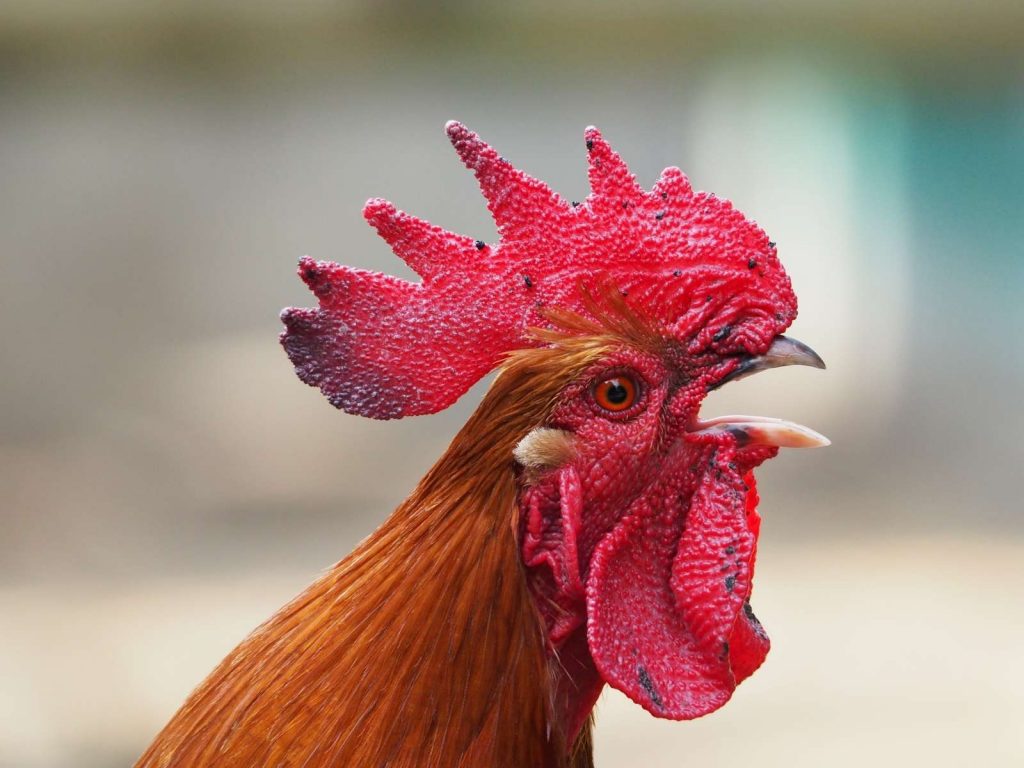
Chickens can be incredibly noisy. That rooster in cartoons who only crows at sunrise is a lie. Roosters can and will crow all day long. And a hen who gets scared will be sure to let you know that something is wrong with her very loud squawking that can go on and on and on.
Not a big deal if you’re out in the country like myself. But if your neighbors are close, they will probably get tired of the noise.
Quail on the other hand are much quieter. Our quail make noise a couple of times a day. But the volume is much lower than that of our chickens and the melody is quite beautiful. I would actually call it more of a whistling or singing sound verses squawking or crowing.
Time to Hatch/Raise
Coturnix quail take 18 days to incubate and hatch. By 8 weeks of age, your tiny birds will have grown into full size adult quail. Sometime around this they will also start laying eggs.
Chickens on the other hand, take 21 days to incubate, and much longer to reach full maturity and start egg laying. Most chickens take on average 16 weeks to reach an age worth harvesting for meat. Egg laying takes just as long, and for some breeds up to 24 weeks. Of course, there are fast growing meat chicken breeds out there. But those chickens must be purchased from a hatchery and cannot be used for egg laying.
Now you can see why I think quail make an excellent addition to any homestead!
very nice article, i have raised quail before and i think you hit all the important points very nicely thanks joe